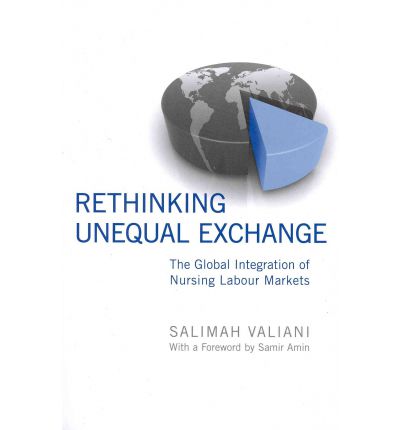Many progressives, unlike neoliberals, believe that labourers, not investors, are the fundamental source of economic productivity, innovation and wealth. Implicit in this line of argument is the view that business’s capacity to accumulate profit therefore depends to some degree on its capacity to diminish labour’s ability to bargain over control of the gains from rising productivity. Many social movements and unions contend that the neoliberal rules — initially propelled by the United States — of the WTO, the IMF, the World Bank and many governments, were not established to protect labour but instead to foster the well-being of those who invest for a living at the expense of those who must work. Market-friendly policies falsely promised to increase economic growth, equality and democracy whereas many progressives contend that the real goal of these policies has been to discipline labour by making it “flexible,” that is, inexpensive and impermanent.
Salimah Valiani’s insightful Rethinking Unequal Exchange: The Global Integration of Nursing Labour Markets (University of Toronto Press 2012) deepens this analysis by deploying a feminist, world-systems approach to the following question: how do we understand the international migration of caring labour — specifically female nurses from the Global South to the Global North — over the past 20 years? The Department of Economic and Social Affairs of the United Nations Secretariat reports that the total number of international migrants has more than doubled in the past 45 years, rising from 75 million in 1960 to 191 million in 2005, with income differentials and employment conditions being the principal factors causing health-care workers to migrate from poorer countries to richer ones. Valiani points out that the flow of nurses reflects global inequalities in power and wealth: nurses migrate from peripheral countries to core countries — for example from the Philippines to Canada, from weak peripheries to strong peripheries, such as from Bangladesh to Saudi Arabia, and from weak core countries to strong core countries, such as from the U.K. to the U.S.
It is remarkable that, while labour moves from the less affluent regions to wealthier ones, it is also placed under new, more challenging historical conditions. The number of migrants entering the OECD (Organization for Economic Cooperation and Development) countries on a temporary basis is now three times the number of those entering on a permanent agreement. Between 2003 and 2007, temporary labour migration was the most rapidly expanding form of employment relocation to the OECD, growing at an average annual rate of 7 per cent. Thus the migration from periphery to core is to some degree a move to labour standards that are shifting to emulate those in the periphery.
Valiani’s world historical approach explains the extension and transformation of global capitalism not in terms of the relatively recent rise of neoliberalism, but as a process that began in the age of Christopher Columbus. This approach explains how higher wages, working conditions and standards of living are not recent developments but in fact part of a longer-term dynamic produced by the division of global labour along core and peripheral lines. The study builds on the late Giovanni Arrighi’s argument that there have been four systemic cycles of capital accumulation since 1450. The first was the Genoese cycle from 1450-1640, the second was the Dutch cycle from 1640-1790, the third was the British cycle from 1790-1925 and the fourth was and is the U.S. cycle operating since 1925. Each cycle consists of a phase of material expansion followed by a phase of financial expansion. During the former, capitalists invest in productive sectors, while in the latter they invest in speculative activity because demand and rates of profit in the productive sector begin to systematically diminish.
Valiani’s book argues that the contradictions of the fourth, U.S., cycle of accumulation have led to intensified exploitation of labour, including the increased employer use of temporary migrant workers. The worldwide dismantling of trade unions as a political force from the 1980s onwards has corresponded to increased employer demand for temporary migrant nursing employment. The Philippines was the first country to make temporary migrant nurses available and Canada and the U.S. were the first Northern countries to begin importing temporary migrant nurses in large numbers. The rise of temporary migrant nursing labour embodies the shift from a social-economic policy framework that aspires to full employment and workers’ rights to one that built on the idea of flexible labour markets and more broadly is an example of radical restructuring resulting from the end of the material expansion of the U.S. systemic cycle of accumulation.
The novelty innovation of Valiani’s analysis is that it provides us with a model that attempts to integrate the dynamics between the Global North and the Global South, between capital and labour, between patriarchy and feminism and between the present and the distant past. If the author’s provocative analysis is accurate, then the historical conditions which gave rise to neoliberal policies are now apparently circling back to dismantle the hegemony of the country that initially believed it would most benefit most from them.
Thomas Ponniah was a Lecturer on Social Studies and Assistant Director of Studies at Harvard University from 2003-2011. He remains an affiliate of Harvard’s David Rockefeller Center for Latin American Studies and an Associate of the Department of African and African-American Studies.



